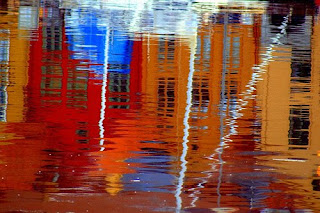

1.
The Arts and Crafts style was a period in time that could be seen all over the world. It was an era where hand made items ruled and the use of the machine was not accepted. The style was to embrace natural materials and enhance nature. A home that portrays this style period best is the Gamble House by the Greene brothers. The house pulls in inspiration from local nature like the live oaks of California as well as inspiration from the orient. The Greene brothers took a lot of the design from Chinese and Japanese architecture and created their own style. The home was inspired by nature and looks as if it is growing out of the landscape. This idea was definitely one of the Asian cultures. They embraced nature as an everyday life style and the Greene’s wanted to bring that concept to their design.
2.


(Barcelona Pavilion)
If you honestly think about how we live our lives today, would we be able to manage everything without the technologies we have developed? I’m not saying it is not possible to survive without a cell phone but life, as we know it would be chaotic without it. Our society has come to an age where we have completely accepted the machine as a way of life. In the late 19th century and early 20th century they were just beginning an era where the machine replaced everyday tasks and not everyone was thrilled.
The Bauhaus was the first to say that bringing in the use of machine was ok. Especially if it was the perfect blend of man made and machine made. They also coined the idea that in modern design less is more. A great example of these concepts is the Barcelona Pavilion designed by Ludwig Mies van der Rohe. He had a very minimalistic approach to the design where he used partitions to separate spaces instead of whole rooms. He also focused on the materials he used, where he used the blend of man made and machine. For instance the Barcelona Chairs that are in the space have metal legs that were machine made and meant to look as if they are too thin and light to hold the man made leather and solid looking cushioning. Mies van der Rohe accepted the machine and used it for what he could not create with his hands. He did not solely rely on the machine but embraced it for the technology that it provided him. Many more designers also embraced the machine and that is why today we have the advanced technology that we do. Because instead of impeding the advancement of machinery the majority of people welcomed it and celebrated the products that it gave us.
3.


Page 570 Roth (Douglas House)
I chose the Douglas house because of its stark colors and then I transformed the interior using reds and yellows.







